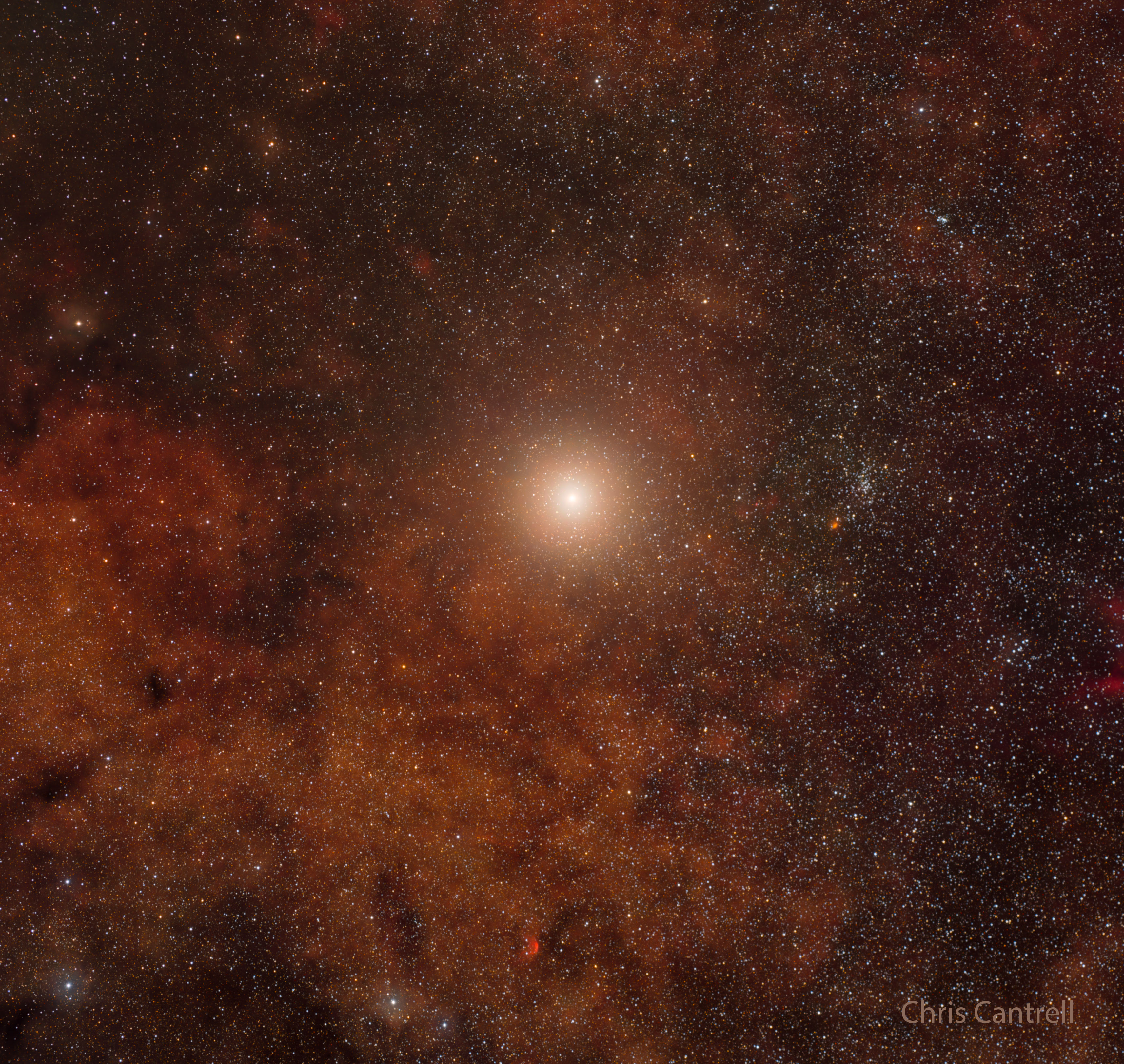
Posted on 01/01/2025 12:23:34 PM PST by MtnClimber
Explanation: The closest star system to the Sun is the Alpha Centauri system. Of the three stars in the system, the dimmest -- called Proxima Centauri -- is actually the nearest star. The bright stars Alpha Centauri A and B form a close binary as they are separated by only 23 times the Earth- Sun distance - slightly greater than the distance between Uranus and the Sun. The Alphasystem is not visible in much of the northern hemisphere. Alpha Centauri A, also known as Rigil Kentaurus, is the brightest star in the constellation of Centaurus and is the fourth brightest star in the night sky. Sirius is the brightest even though it is more than twice as far away. By an exciting coincidence, Alpha Centauri A is the same type of star as our Sun, and Proxima Centauri is now known to have a potentially habitable exoplanet.
For more detail go to the link and click on the image for a high definition image. You can then move the magnifying glass cursor then click to zoom in and click again to zoom out. When zoomed in you can scan by moving the side bars on the bottom and right side of the image.


🪐 🌟 🌌 🍔
Wow.
In the final season of “Lost in Space,” the Robinson family successfully reaches their destination, Alpha Centauri, but not without significant challenges; the ending sees Will and the Robot venturing out to explore the galaxy together, signifying a new chapter for them, while the rest of the family settles into their new life on the planet, with a hopeful and somewhat bittersweet tone, implying that their journey is not truly over.
Howdy, neighbors!
I never heard of the star Chris Cantrell.
I heard of the star Jerry Cantrell.
Does Chris Cantrell emit signals that sound like Alice In Chains tunes?
…ok, I’ll go away now…
There is an episode in the final season where they were fooled into believing they had landed on one of the planets of AC by a bunch of aliens disguised as young 60's earth hippies. That episode was called, "The Promised Planet."
At Apollo/Saturn V speeds it would take about 115,000 years to get there. Pick up a few gravity assists along the way (AKA “slingshotting”) and you could cut that to 80,000 years.
Except that once you got there you’d need a gazillion tons more fuel to slow down because brakes don’t work in space.
I think we need to develop a whole different kind of getting-from-to-there technology.
😀 🤔 🤓
What’s that red thing directly below Alpha?
And a reddish HII region at 9:00?
Space isn't empty space and hitting even a hydrogen atom with sufficient velocity would be deadly. Physically rocketing through space faster than about 1/10th the speed of light (30,000 km/s) might be impossible because the force of the collision with a standard size grain of sand (0.00440 grams) would be equivalent to the detonation of a bit more than 1000 lbs of TNT.
Short of folding space or learning to control worm holes (or some other form of interdimensional wizardry), 30,000 km/s might be as fast as we ever get. Even that fast Proxima Centauri is still 45 years away.
This one is a great find.
· join · view topics · view or post blog · bookmark ·
· post new topic · subscribe ·Google news searches: exoplanet · exosolar · extrasolar ·
Source of the confusion may be that the described finale was from the second series. The original series I think just got cancelled, no big finish.
Original series, The Promised Planet:
https://www.imdb.com/title/tt0636237/?ref_=ttep_ep19
Netflix reboot, Trust
https://www.imdb.com/title/tt13675378/?ref_=ttep_ep8
Thanks, SC.
Disclaimer: Opinions posted on Free Republic are those of the individual posters and do not necessarily represent the opinion of Free Republic or its management. All materials posted herein are protected by copyright law and the exemption for fair use of copyrighted works.